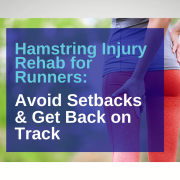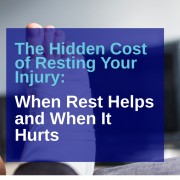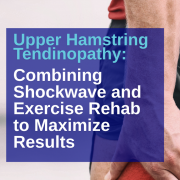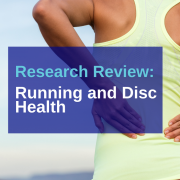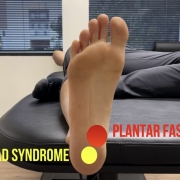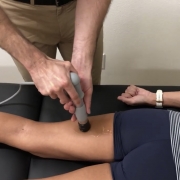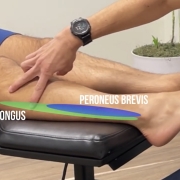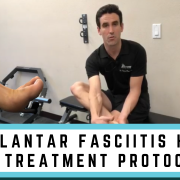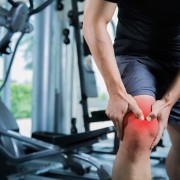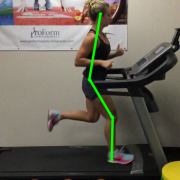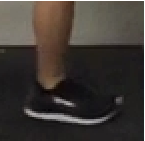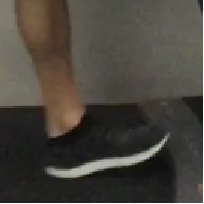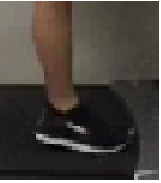The Hidden Cost of Resting Your Injury
/in running injury, Shockwave Therapy, Shockwave treatment, Sports Injury, Training/by adminStruggling with deep, nagging pain in your lower glute that flares up when you sit or run? Upper hamstring tendinopathy can be stubborn, but a combination of shockwave therapy and progressive exercise rehab is the key to lasting relief and tendon resilience—learn why this approach works best!
Upper Hamstring Tendinopathy: Why Combining Shockwave Therapy with Exercise Rehab Is a Game Changer
/in running injury, Shockwave Therapy, Shockwave treatment, Sports Injury, Training/by adminStruggling with deep, nagging pain in your lower glute that flares up when you sit or run? Upper hamstring tendinopathy can be stubborn, but a combination of shockwave therapy and progressive exercise rehab is the key to lasting relief and tendon resilience—learn why this approach works best!
Is Running BAD for your discs?
/in Low Back Pain, Low back Sports Injury, running injury, Uncategorized/by adminRunning and Your Spine: A New Look at Intervertebral Disc Health
There’s a common myth that running is bad for your back. But a new systematic review published in Sports Health tells a different story. This review combined 13 studies with 632 participants to investigate how running affects the health of intervertebral discs—the cushions between the vertebrae in your spine.
How Running Affects Your Spine
The review looked at two types of studies: some measured how running affected spinal height, while others used MRI to observe changes in disc composition. Here’s what the research found:
- Temporary Compression: Running causes temporary compression of the discs. This means that during a run, discs lose some water content and slightly shrink in height.
- Supercompensation Between Runs: After the run, your discs supercompensate by drawing water and glycosaminoglycans back in. These are important for keeping your discs hydrated and healthy. Over time, this process can actually improve disc health.
- Stronger, Healthier Discs: Habitual runners were found to have healthier and stronger discs than non-runners. So rather than damaging your spine, regular running appears to build resilience in your intervertebral discs.
Takeaways for Runners
This study is great news for runners and those hesitant to start due to back pain concerns. Here’s what you should know:
- Running is Safe for Your Back: The temporary disc compression during a run is completely normal and healthy. The key is the recovery between runs, where your body replenishes lost fluids and nutrients.
- Regular Running Builds Stronger Discs: Over time, the cycles of compression and supercompensation make your discs more resilient, reducing the risk of spinal issues.
- No Need to Fear Running: If you’ve been avoiding running due to fears of back injury, this study shows that running is not only safe but can actively improve your spinal health.
Incorporating regular runs into your routine can be a powerful way to maintain a healthy back. So, lace up those running shoes and start reaping the benefits for your spine!
Reference: Shu D, Dai S, Wang J, Meng F, Zhang C, Zhao Z. Impact of Running Exercise on Intervertebral Disc: A Systematic Review. Sports Health. 2024;0(0). doi:10.1177/19417381231221125
Types of Heel Pain
/in Foot pain, running injury, Sports Injury/by Dr. Travis RoseMany patients ask themselves, “Do I have plantar fasciitis?”. Many patients assume they have plantar fasciitis as it is a fairly well known term but there are many types of heel pain. The types of heel pain shown in the video below are the most common types of heel pain. Based on the location and the type of pain you are experiencing, it is easy to differentiate between let’s say plantar fasciitis or achilles tendonitis, plantar fasciitis or fat pad syndrome, etc. Once you have a proper diagnosis, then you can go about treatment for heel pain successfully.
What is Fat Pad Syndrome?
The most common condition we see that tricks patients into thinking they have plantar fasciitis is fat pad syndrome. Some patients can have both! There are a few key differences in the history and exam to differentiate between the two. Patients with fat pad syndrome have pain consistently throughout the day, worse barefoot, and stretching does not help. Plantar fasciitis is characterized by pain that is worse in the morning, but improves to a degree as you walk around. Stretching and rolling usually help temporarily alleviate symptoms. Fat pad syndrome needs to be protected with taping to support the fat pad, wearing heel cups in your shoes, and wearing cushioned shoes throughout the day. Once the heel is protected, inflammation will go away and the symptoms improve.
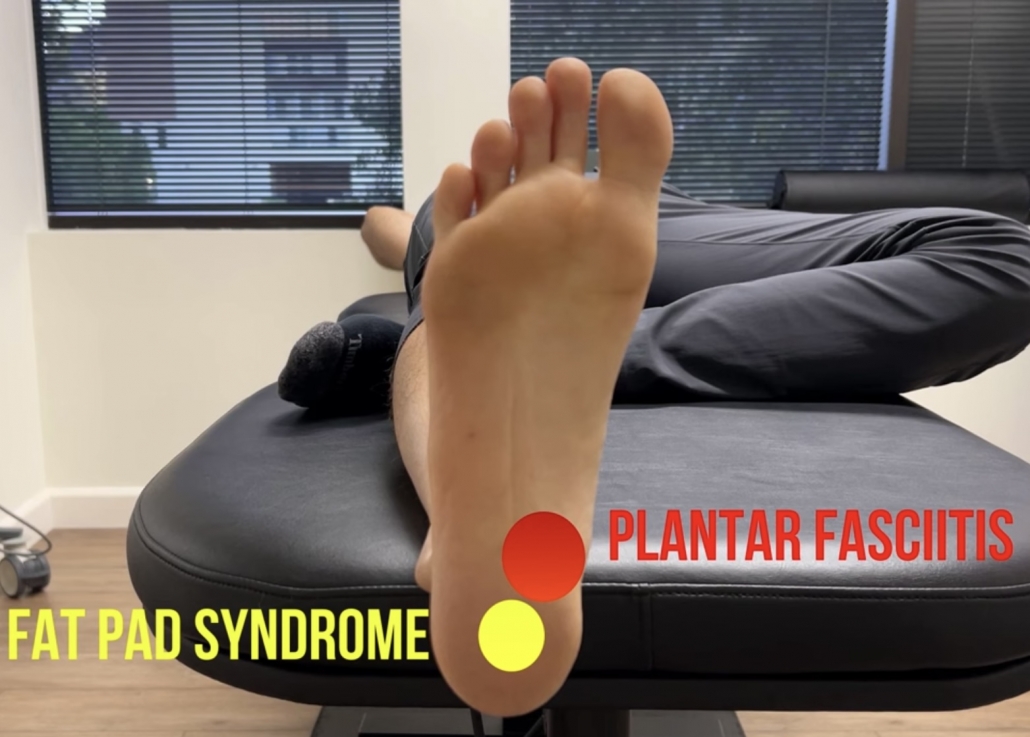
Is a Plantar Heel Spur the Cause of My Pain?
One question we often get asked is if a patient has plantar fasciitis or heel spur. The reality is, is that people may have heel spurs and never have pain in the heel. Or patients may have plantar fasciitis symptoms and find a bone spur after having an x-ray. Patients may experience plantar fasciitis pain with a heel spur or they may not.
A heel spur is only present if there has been enough tension or pulling from the plantar fascia. This constant tension results in the heel bone becoming elongated at the plantar fascia attachment site. This usually occurs from long standing tension in the plantar fascia from high arches, biomechanical stress, hallux limitus, etc. Treatment is same if a patient has plantar fasciitis or heel spur.
Achilles Spurs and Haglund’s Deformity
Heel spurs can also be seen on the back side of the heel where the Achilles tendon attaches. Achilles tendonitis can cause pain in the back of the heel. This type or Achilles tendinopathy is termed insertional Achilles tendonitis as the pain is at the site of where the tendon inserts into the heel bone. Similar to the plantar heel spur, some patients may have an Achilles heel spur, others may not. Treatment of insertional Achilles tendinitis, with or without a spur is the same.
A more obvious deformity called a Haglund’s deformity, is a overgrowth on the backside of the heel where the Achilles attaches. The tendon becomes inflamed when this deformity rubs on the soft tissues, especially in shoes. We most comonly see this in patients who have had chronic Achilles tendinopathy or have other structural causes of this deformity such as high arches, hallus limitus, and or rear foot varus
Less Common Types of Heel Pain
L
Less common types of heel pain but still seen in the clinic are peroneal tendonitis and posterior tibialis tendonitis. Peroneal tendonitis can affect the outer portion of the heel while posterior tibialis tendonitis can affect the inner heel area. Usually the pain is at the sides of the heels but we have seen some cases where pain is on the bottom/side of the heel. Again patients are quick to say they have plantar fasciitis, but with a pinpoint exam, we can rule in these other tendons as being the pain generators, not the plantar fascia.
The heel is a small area and can be relatively simple to diagnose the cause(s) of heel pain. However, many people end up having different conditions than what they thought they had. This ultimately delays the recovery process by not receiving the correct treatment plan initially. Schedule with one of our sports chiropractors today to get you on the correct path to recovery. Peak Form Health Center is located in Mission Valley, San Diego.
High Hamstring Tendinopathy Treatment
/in Knee Pain, running injury, Shockwave Therapy, Shockwave treatment, Sports Injury/by Dr. Travis RoseHigh hamstring tendinopathy is a condition that affects many different athletes. This type of injury is usually a result of repetitive strain, and affects many running athletes. Track running athletes, particularly hurdlers, are susceptible to high hamstring tendinopathy due to the large forceful range of motion required. Endurance runners are also susceptible due to the high volume of contractions the hamstring muscles undergo during training and racing. Usual treatment for high hamstring tendinopathy involve massage, Active Release Technique, Graston Technique, eccentric loading exercises (Nordic hamstring curls), and core strengthening.
Shockwave Therapy for High Hamstring Tendinopathy
In stubborn cases of high hamstring tendinopathy, we have been having great success with shockwave therapy. High hamstring tendinopathy treatment with shockwave therapy involves using shockwaves to stimulate a healing response at the affected hamstring tendon. Shockwave therapy has been shown to increase blood supply, activate dormant stem cells, break down trigger points, and loosen up scar tissue/calcifications at the injured site.
In chronic tendinopathy, the affected tendon has poor blood supply and physically starts deteriorating. The shockwaves stimulate the body’s healing response to the area to regenerate the damaged tendon. With weekly treatments, the beneficial inflammation/healing response reaches its peak to repair the damaged tissue.
Watch a shockwave treatment with one of our marathon runners who was dealing with nagging high hamstring tendinopathy.
After 4-8 weeks, most patients experience complete resolution of their high hamstring tendinopathy. Most importantly, patients do not need to avoid training while you are undergoing shockwave therapy treatments. In fact, it is important to load the hamstring with targeted strength exercises. Eccentric loading exercises such the Nordic hamstring curl are very effective at targeting the hamstrings. Even simple isometric exercises are enough to stimulate the tendon while it undergoes shockwave therapy. If you are interested in starting your shockwave therapy for high hamstring tendinopathy, schedule here. We also treat various other tendinopathies with shockwave therapy.
Peroneal Tendonitis Treatment
/in Conditions, Foot pain, running injury, Sports Injury/by Dr. Travis RoseWhat is Peroneal Tendonitis?
Peroneal tendonitis is characterized by pain and tenderness on the outer part of the foot and ankle. In some cases, there can also be swelling around the tendons and tendon sheaths around the outer ankle. The two main peroneal muscles originate on the outer lower leg bone (fibula). The longer peroneal muscle runs around the outside of the ankle, and wraps around the side of the foot to the bottom of the foot and inserts into the midfoot (medial cuneiform) and the base of the 1st metatarsal. When these muscle become excessively tight, the tendons become inflamed, rub against the side of the ankle and foot which can become quite painful. Check out our video below describing our approach to treating peroneal tendonitis and continue reading below.
What are the Causes?
When the peroneal muscles sustain a higher load than what they are capable of handling, peroneal tendonitis can occur. Peroneal tendonitis can be a result of ankles sprains, repetitive strain (ballet dancing, jumping, running), people with high stiff arches in their feet, and from compensation due to other injuries (plantar fasciitis).
High stiff arches in the feet is often a presentation we see as this type of foot places more pressure on the outer half or outer third of the foot. This causes the peroneals to work much more strenuously than in feet with a more normal/flexible arches. Due to this weight distribution, these individuals are more prone to “rolling” their ankle during normal day to day walking and especially during sports (ex: Soccer). When looking at wear patterns on the bottom of shoes for a runner, we will see excessive where on the outer border of the bottom of the shoe. In many of the chronic cases of peroneal tendonitis, many patients do not know what “caused” the pain to start. When we go through a thorough exam and history, many patients have the history and characteristics described above which should be addressed for proper treatment.
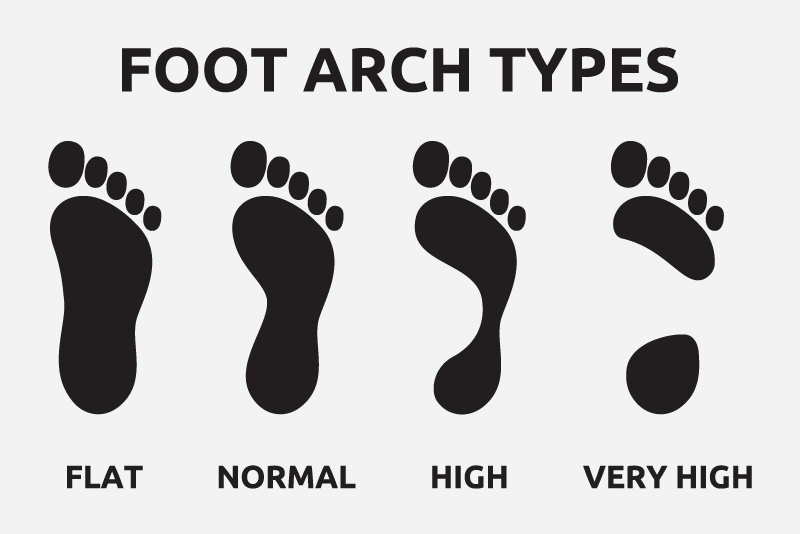
Conservative Treatment
Conservative treatment for peroneal tendonitis and peroneal tendinopathy is very successful for managing the symptoms. In our office, we usually start peroneal tendonitis treatment with Graston Technique to the peroneal muscles (The peroneous longus, peroneous brevis, and peroneous tertius) to help loosen up the muscles while promoting blood flow to the area. Active release technique, a type of myofascial release, for peroneal tendonitis may be helpful to break down adhesions and trigger points within the peroneal muscles. Most importantly, loading the peroneal muscles with proper strength training exercises will help stimulate the injured areas of the tendon while providing strengthening to avoid future reaggravation. Peroneal tendonitis rehab exercises are crucial to help the tendons heal properly.
Finding the Root Cause of Peroneal Tendonitis
In treating peroneal tendonitis, it is important to discover the root cause. As described above, if a patient has very stiff, high arches, this will place more of the body weight on the outer half of the foot which will overly stimulate the peroneal muscles. Another example is peroneal tendonitis due to hallux limitus (when the big toe has limited extension), patients will have a hard time shifting their weight towards their big toe during gait which keeps their weight on the outer half of the foot, loading the peroneal muscles excessively.
Other conditions such as plantar fasciitis can lead to peroneal tendonitis due to compensation. When the bottom of the inner heel is painful, patients unknowingly keep the weight of their body on the outer half of the foot to avoid pressing into the painful part of the heel; peroneal muscles again become strained resulting in peroneal tendonitis. Many of these patients experience outer heel pain while walking or outer heel pain while running. Another condition called cuboid syndrome causes peroneal tendonitis as the peroneal tendons run across a portion of the cuboid bone. When the cuboid bone is stiff and not moving well with cuboid syndrome, the peroneal tendons also become stiff resulting in pain.
If you are dealing with peroneal tendinopathy, please schedule with one of our sports chiropractors today. Above you will find the “schedule now” tab which will direct you to our online scheduler. You may also call our office at 619-818-4306.
Home Treatment for Plantar Fasciitis
/in running injury, Sports Injury, Tips/by Dr. Travis RosePlantar Fasciitis can be a frustrating condition to deal with for both the patient and the practitioner. While challenging, we have seen excellent results in resolving plantar fasciitis at our San Diego sports injury clinic. The combination of Graston/Active Release Technique combined with specific home treatment for plantar fasciitis work well to eliminate it for good! Keep reading for our home treatment for plantar fasciitis strategies and check our our Youtube video.
4 Phase Home Treatment for Plantar Fasciitis
- Stretch and Mobilize– Foam rolling, lacrosse ball massage, and specific stretches are primarily used in this treatment phase. The goal is to alleviate tension that may be causing pain, faulty biomechanics, and other compensations.
- Plantar Fasciitis Specific Strengthening– Foot exercises are used to help strengthen the intrinsic muscles of the foot to help support the arch, foot, and ankle. Eccentric lower leg exercises are prescribed to help stretch and strengthen the surrounding tissue. Research has shown that eccentric loading exercises for plantar fasciitis has significant benefit.
- Global Strengthening- As symptoms improve, it is important to work on strength and balance moving up the lower extremity. Typically this involves core, hip, posterior chain strengthening to support the entire leg.
- Sport Specific Strategies- Depending on the sport or activity, sport specific strategies are necessary for successful “return to play”. For example, as a runner, you will want to build endurance in the tissues before returning to quick explosive speed work.
Managing Symptoms During the 4 Phase Approach
There are many different devices, that can help minimize symptoms while performing home treatment for plantar fasciitis. In our article 7 Ways to Treat Plantar Fasciitis at Home, we discuss these strategies in detail. In summary, stretching and supportive devices can minimize the painful symptoms. The more normal you can move around your heel, the less strain your body will experience.
Introduction to Home Treatment for Plantar Fasciitis
Watch our Youtube video describing our strategies mentioned above. Don’t forget to subscribe to our channel! We
Follow along with our next blog post, Stretch and Mobilize Plantar Fasciitis, for the specific exercises we use with our patients to eliminate plantar fasciitis!
Are you looking for a provider to help with your heel pain? Peak Form Health Center has the sport doctors that can help! We are conveniently located in Mission Valley, San Diego near the neighborhoods of UTC, La Jolla, Normal Heights, Hill Crest, Mission Hills, and Kensington.
Runner’s Knee Treatment |San Diego
/in running form, running injury, Sports Injury/by adminRunner’s Knee Treatment | San Diego
Patellofemoral pain syndrome, aka runner’s knee, is characterized by achy, dull pain generally around the front of the knee. Runner’s knee is a common type of running injury that we see in our San Diego running injury clinic. With a combination of manual therapy, exercise, and run program modification, the runner returns to running pain free. Let’s take a look at common symptoms/causes of runner’s knee and the treatments that will get you back to running pain free.
Symptoms
Most runners will feel dull, achy pain diffusely around the front of the knee. The pain may favor the outer front or the inner front of the knee. It is usually worse with longer or down hill runs. Sitting for long periods usually increases tightness and soreness around the knee. Stretching often makes the knee feel better.
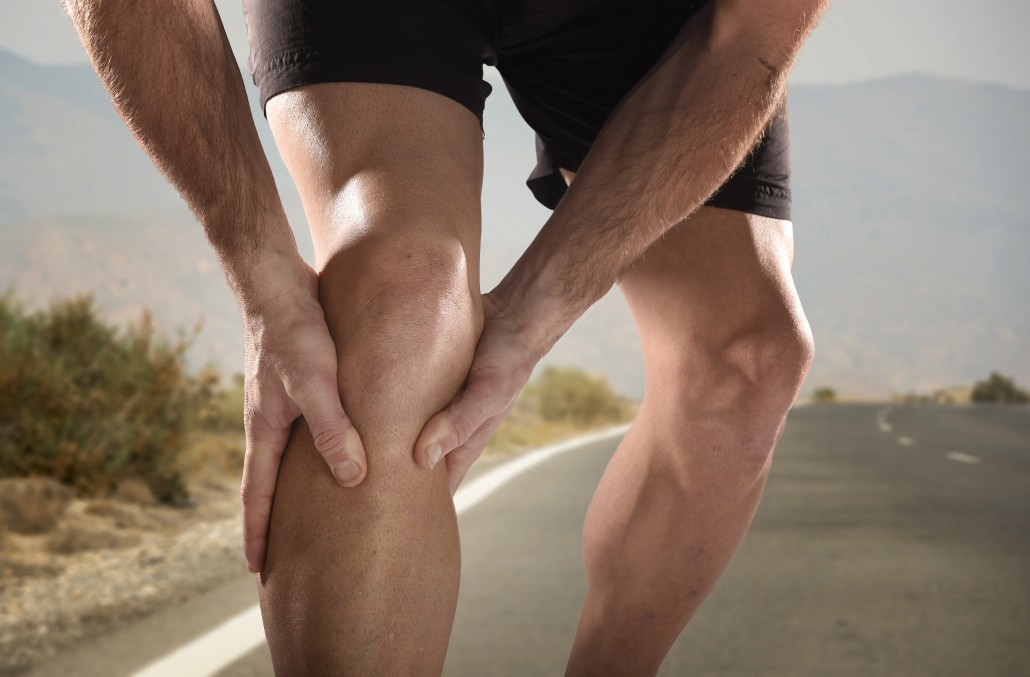
Common Causes of Runner’s Knee
Here are the most common causes for developing runner’s knee.
- Running Form– Many runners, beginner through experienced, have running form flaws that create excessive tension at the knees. Common culprits are running with a low cadence, over striding, running with a crossover gait, and poor posture. Read our blogs for more information: Increase Your Cadence!, Do You Run With a Cross-Over Gait?, Improve Running Posture.
- Performing “Too much, Too Soon”– This is what most commonly affects newer runners. They begin training for their first 5k, 10k, or half marathon and start running too many miles with too little recover. The tissues do not have enough time to heal between running sessions, and eventually injury results.
- Training Error– If a runner drastically changes their training, runner’s knee can develop. Adding significant amounts of hill training, particularly running down hill, is the most common training error that can cause or exacerbate runner’s knee.
- Muscular Imbalance– Runners who are excessively tight in the quadriceps muscles are prone to developing discomfort in their knees. Keeping up with a stretching regimen will help ease the symptoms.
- Older Age– Older runners tend to have some decrease in joint space due to wearing down of the tissues over the years. When the joint between the knee cap and knee wears down, there is more compression at the cartilage which can cause swelling and irritation of the local tissues. Every hear cracking, popping , or tearing when walking up and down stairs or with squats? Those are signs of cartilage wear called crepitus.
Runner’s Knee Treatment San Diego
Treatment for Runner’s knee involves 4 main approaches. The first is to address the injured tissue using Active Release Technique and Graston Technique. Active Release Technique for runner’s knee is effective at breaking down tight scar tissue around the knee. The second, using a running gait analysis to identify and correct common running form errors. Check out our full gait analysis for our patient with runner’s knee here: Runner’s Knee Case Study. The third is to modify the run training plan. Proper periodization is critical when coming back from injury. The goal is to modify certain factors (ex: terrain) that are known to irritate the knee. The fourth is to add strength training to the supporting muscle groups. This will provide more support, resist strain, and ultimately decrease chance of developing a running injury.
If you are experiencing pain in the front of the knee, you may be dealing with runner’s knee. It is important that you get the knee evaluated to get a proper diagnosis. This will help develop a correct treatment plan. Each person may benefit from slightly different approaches. The exercises and training modifications given to each patient are unique to the individual.
Our office is located in Mission Valley, San Diego near Normal Heights, La Mesa, Hill Crest, Point loma, Bay Park, Clairemont, Pacific Beach, and Bird Rock. Schedule online with one of our sports chiropractors today. We will help you get back to running pain free!
Which Foot Strike is Best for Running?
/in running injury, Sports Injury/by adminWhich Foot Strike is Best for Running?
There is some debate as to which foot strike is best for running. Forefoot striking has been given a lot of attention due to the book “Born to Run” and the research by Dr. Daniel Lieberman of Harvard University. Essentially, it was found that natural runners (runners who run their whole lives) run with more of a forefoot strike which was also shown to decrease force at initial foot strike. These facts led to the conclusion that forefoot striking is the best way to run and prevent injury. Many people began forcing themselves to run forefoot, or run barefoot which helped produce a forefoot strike naturally. Many people also found themselves severely injured due to the excessive strain on the Achilles Tendon, metatarsal bones, and plantar fascia!
Drastically changing the style in which you run is a major risk factor for injury. Is it possible to run as a fore foot striker? Absolutely! But if you were a habitual heel striker and then over night performed all of your mileage as a forefoot striker, you are asking for an injury. Any time you make change to your running form, it should be done gradually over weeks and months so your body has time to adapt and become stronger with the new style.
So Which Foot Strike is Best for Running?!?
There are three types of foot strikes with many variations between the three. Here is the answer, any and all foot strikes can be best for running! There are other more important aspects of running that must be dialed in and in most cases, how your foot strikes the ground is not a huge concern. Where the foot lands in relation to your body is a more important area to address. If the foot is landing far away from your body, when the foot lands, a “braking” force will press back against your body, making you less efficient. This will ultimately cause fatigue, muscle soreness, and potentially lead to injury.
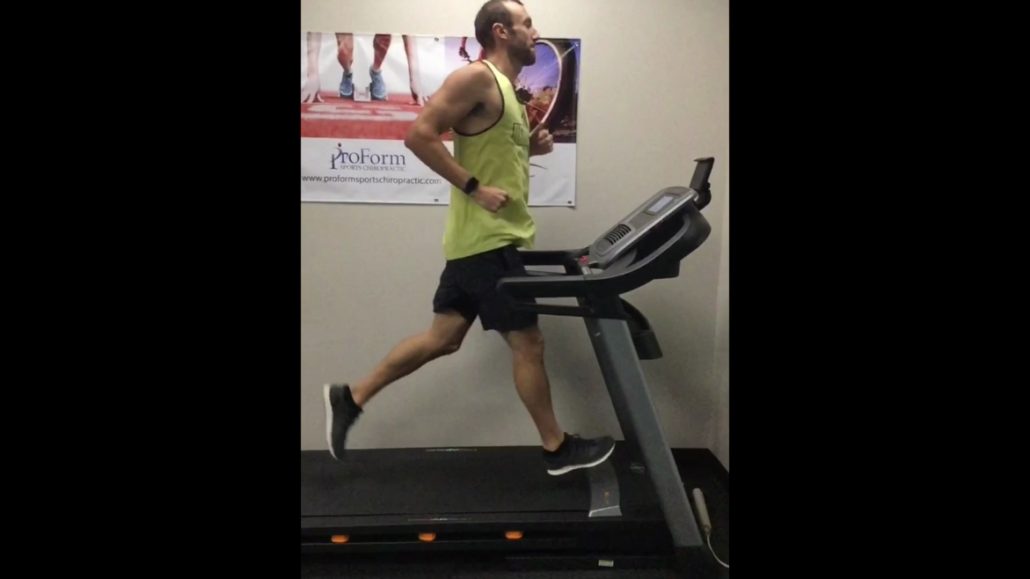
Runner allowing foot to travel too far forward. Will land with “braking” force against body.
If you work on landing your foot closer to your body, you maintain forward momentum much more easily, thus making you a more efficient runner! It is also less jarring to your muscles and joints so it can prevent injury. So how does one land closer to the body? Many times runners need to work on taking smaller steps and usually the easiest way to do this is to increase cadence. Normal cadence is a range from 170-190 steps per minute (regardless of how fast you are running). By upping the cadence, you are forced to take smaller steps resulting in a foot strike closer to the body.
Adjusting to a faster cadence takes time. Read our article here to learn about ways to practice increasing your cadence. Some runners say, “It doesn’t feel natural to run with a faster cadence.” or “I just don’t feel like it works for me.”. Increasing cadence does not have to be a permanent fixture to your running form! However, performing higher cadence drills will retrain your body to take those smaller steps. So after weeks and months of practice, you will naturally get the feel for where the foot should land which is closer to your body. Then you can essentially run at whatever cadence feels comfortable now that the smaller steps are built into your muscle memory.
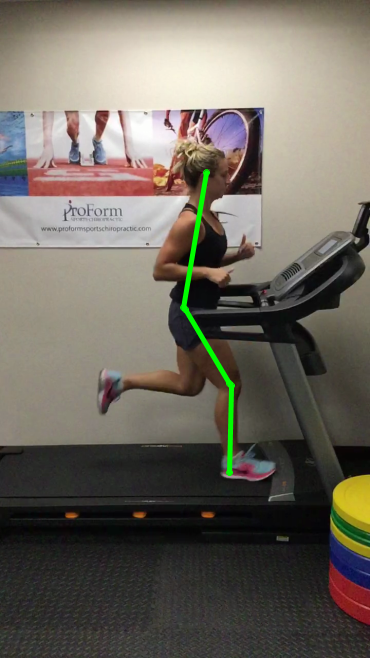
Landing with foot close to body, maintaining forward momentum.
One More Time… Which Foot Strike is Best for Running?!?!?!?!
Ok, I will pick a side, sort of. First, work on the above mentioned techniques to improve where your foot lands. Now, in general, an excessive heel strike, or an excessive forefoot strike can lead to injury. So trying to land more mid foot or a slight heel strike or a slight forefoot strike will likely make you a more efficient, healthier runner. What is an excessive heel strike or an excessive forefoot strike? There is not an exact measurement or anything along those lines. But if a runner demonstrates either type of foot strike during our running gait analysis and it is corroborated with the symptoms they are presenting with or and injury they have, then we determine it is excessive and try to reduce that type of excessive strike (forefoot or heel).
Other Helpful Information on Foot Strike
Check the wear pattern on your shoes. If you notice your heel is significantly worn compared to the rest of the sole of your shoe, then you are likely excessively heel striking. On the bottom of the shoe, look at the sides. Is there more wear on the outer part of the sole, more on the inner? That can signify excessive tilting of the foot when your foot hits the ground. This can also cause issues with your gait and result in injury.
Conclusion
I hope this article was helpful at explaining that there isn’t a foot strike that is best for running. If you are suffering from running related injury, or have recurring symptoms, schedule an appointment with chiropractors today. We treat all types of running related injuries. We will perform a thorough history and evaluation and begin treatment right away (unless further imaging is required). Our running gait analysis program is another tool that we use. It helps identify common biomechanical inefficiencies that lead to poor running form and increase chance of injury. Check out one of our run gait analysis videos here. Our chiropractic office is conveniently located in Mission Valley, San Diego. We are near the neighborhoods of Serra Mesa, La Jolla, Sorrento Valley, UTC, Mira Mesa, Clairemont Mesa, Poway, and Scripps Ranch!
___________
Dr. Travis and Kevin Rose are avid runners and triathletes. Dr. Rose is a certified running healthcare provider through The Running Clinic, the premier source for running injury information.
PEAK FORM NEWSLETTER SIGN UP
Our Office


